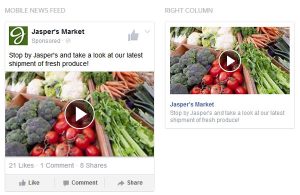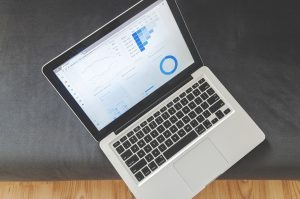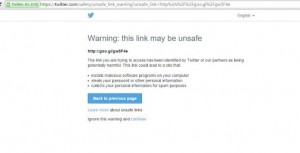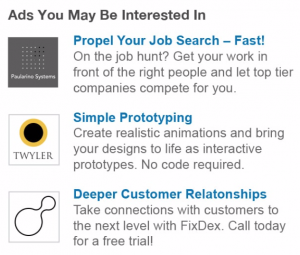Social media content can be a fickle friend to your social strategy (and feeling successful).
Why do certain posts launch into the stratosphere, while some fall flat?
While we marketers rely on reports and data to paint the big picture, perhaps we’re better suited looking at the smaller side of things.
Here’s how we’ve been using micro changes to make a BIG impact on our social media content.
How We Plan Our Social Media Content
When we’re creating or curating content for a client, we usually work two weeks in advance.
Our team works with the client to understand the best types of content to share, and it’s placed in one of eight content types in our content calendar:
- Campaign: Includes themes or topics for a day/week/month, and may involve multiple channels of communication and production, promotion across teams. Example: One of our retail mattress clients has a “Sleep Position Saturday” campaign that runs every Saturday for the year.
- Press Release: Self explanatory; links to site or press articles.
- Product Pitch: Product launch, release or update. New feature news or communication with customers; includes discounts, sales, and affiliate retailers.
- Contest: Self explanatory. Sometimes we use a 3rd-party API and sometimes we just ask users to comment, use a hashtag, or “like.” Example: A printing client of ours runs “Win It Wednesday” contests to give away small products in order to gain interests in bigger jobs or appeal to new customers.
- Event: Usually links to a landing page for an event sign up — sometimes the event is created on Facebook.
- 3rd-Party Content: This is the label for all of our curated content, meaning it’s not original content for the brand. We have a Feedly account set up in Sprout Social with approved content sources, and we also have a QA (quality assurance) process that helps us catch content that’s off-topic, mentions a competitor, or talks about taboo subjects.
- Blog/Influencer Content: Original or influencer content gets special attention as we want to make sure our content distribution efforts are on point.
- Behind-The-Scenes (BTS) Content: We encourage our clients to share BTS content to humanize their brand and aid with storytelling.
Collectively, these labels help us ensure that we’re putting out a good mix of content for our clients and that sales and marketing messages are kept to a minimum.
At the end of the month, we can look at the data to show us the big picture of how our social media content performed (see an example report below).

Even though this overview is helpful, it doesn’t really tell us which types of content are most preferred by our audiences — which is important if we want to continue to see good reach, interaction, and engagement.
Social Media Content: What Micro Data Matters?
One of the ways we look at individual pieces of social media content and “score” them is through click audits.
Click audits are reports we’ve run since the beginning a B Squared Media and are run every month by auditing the number of clicks each piece of content we’ve shared has received in the last 30 days.
Clicks are important because they show an interest in reading or learning more, and/or taking action on a call-to-action.
Though we use the aforementioned Sprout Social to gather this data for us, on Facebook you can easily do this in Insights.
On Your Facebook Business Page:
- Go to Insights on your Page menu
- Use the drop-down menu to choose ‘last 28 days’ under ‘Overview’
- Click ‘Export’ (upper right-hand corner)
- Under ‘Export Insights Data’ download ‘Post data’ (not Page data)
- *You can also change your desired date range here

While click audits give us the raw data and a hint of patterns, recently we’ve taken it a step further and started strategizing around a client’s “seesaw data” every week.
What’s seesaw data? I’m glad you asked.
Using Seesaw Data To Uncover Patterns In Social Media Content
If the word seesaw conjures up a vision of you as a kid going up and down on a seesaw, then you’re already familiar with what seesaw data is!
Essentially, we look at the UP and DOWN of our social media content each week.
Specifically, we look at the top three performing posts and bottom three performing posts.
We ask questions like:
- What do they have in common?
- What patterns, if any, are we noticing?
- How can we produce more top-performing content next week without being repetitive?
- Should we cut the lowest-performing content next week? (Note: Sometimes we can’t since it’s an event or product pitch — but we can look at changing imagery and copy)
If this seems too easy … IT IS!
And yet this simple-to-perform strategy provides of with invaluable insights.
Here are just a few patterns we’ve uncovered (for an array of clients):
Top-Content Patterns:
- Patient success stories (medical)
- Millennial content (staffing)
- BTS content (ALL)
- Long copy; 4+ lines (real estate)
- Weekend posts (marketing)
Bottom-Content Patterns:
- Short copy (real estate & marketing)
- Healthy recipes (medical)
- Memes & quotes (staffing)
- Shared content (ALL)
- Negatively worded copy (Retail)
Not only does this micro data help us get to know our particular audiences better, it also helps us understand that not ALL advice should be taken.
For instance, you’ve probably heard over and over again that shorter content performs better on social media.
However, with our seesaw data we’ve found that longer copy does better for several industries while shorter copy tends to have low marks in other industries.
We’ve also refuted some talk that non-shortened links are the way to go (for at least one of our clients, shortened links perform best).
Seesaw data can help you uncover which best practices can actually hurt you or your brand.
Over To You
Is seesaw data something you’d consider monitoring to help improve your social media content?
How are you taking a look at your social media content to improve quality, clicks, interaction, and engagement? Care to share? We’d love to hear your tips in the comments section below!
Digital & Social Articles on Business 2 Community(38)
Report Post









